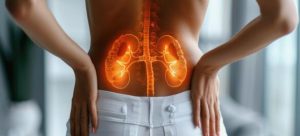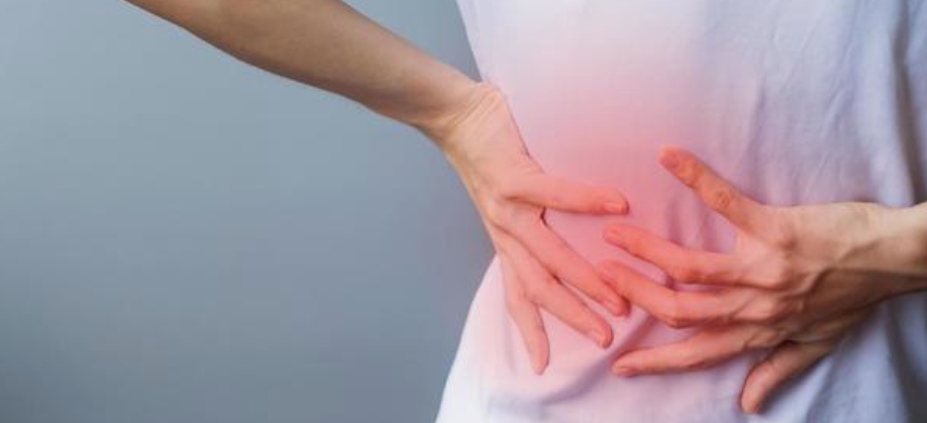Low back pain (LBP) is among the most prevalent forms of discomfort and is a frequent issue in adults. Despite being sometimes considered a minor inconvenience (Knezevic NN, et al. 2021), LBP is actually one of the leading causes of long-term disability worldwide, affecting around 65% of the global population (Abbafati C, et al. 2019). It is estimated that the lifetime prevalence of LBP ranges between 30% and 80% (Goel S. 2019). Research indicates that each year, approximately 6.3% to 15.4% of individuals experience LBP for the first time, with the likelihood of recurrence within a year varying from 1.5% to 36% (Hoy D, et al. 2010). In 2019, about 223.5 million people were estimated to suffer from LBP, leading to 63.7 million years lived with disability (Wang L, et al. 2022). The highest prevalence of LBP in 2019 was observed in the 50-54 age group (Chen S, et al. 2019).
The causes of LBP can be broadly categorized into spinal and non-spinal origins. While spinal causes of back pain are common and can significantly impact quality of life, focusing exclusively on them may overlook a significant portion of the burden caused by this condition. Non-spinal causes of LBP can be more complex, often requiring greater attention during diagnosis and treatment.
Non-Spinal Causes of LBP
Renal Disease:

Kidney disease can contribute to back pain due to shared sensory nerve pathways between the kidneys and spine. For example, nephrolithiasis is frequently reported by patients with autosomal dominant polycystic kidney disease, often due to cyst enlargement, rupture, or infection (Bajwa ZH, et al. 2004). In later childhood, renal diseases can mimic infections (e.g., intervertebral disc infection and paraspinal abscesses), inflammation (such as systemic lupus erythematosus and rheumatoid arthritis), and leukemia, all of which can cause LBP (Marin JR, 2007). Furthermore, LBP, alongside symptoms like dysuria, urinary frequency, hematuria, and costovertebral angle tenderness, may be seen in patients with acute nephrolithiasis and urinary tract infections, making diagnosis challenging (Abrahamian FM, 2013). Kidney stones, especially when combined with upper urinary tract infections, can lead to sharp, one-sided lower back pain (Worcester EM, and Coe FL. 2008).
Endometriosis:

Endometriosis is a prevalent condition among fertile women, affecting 10%–15% of this group (Cricco C, et al. 2021). Women of reproductive age, particularly those aged 25 to 29, are most at risk (Missmer SA, 2004). As a complex gynecological disorder, endometriosis should be considered when assessing women with lumbar and pelvic pain (Cricco C, et al. 2021; Troyer MR, 2007). It often manifests as low back and abdominal pain that may worsen during intercourse and is frequently associated with dysmenorrhea (Hickey M, et al. 2014). Women with symptomatic endometriosis typically experience pain in the hypogastric and perineal areas (Koninckx PR, 1996), but they may also suffer from lower back and limb pain (Macek C, 1983; Prendergast SA, and Weiss JM, 2003). Due to its high prevalence and potential to be mistaken for LBP, thorough physical examinations are essential. Clinicians must consider all musculoskeletal, visceral, and psychosocial factors to accurately diagnose pelvic disorders like endometriosis (Troyer MR, 2007).
Tumors:
Tumors can impact the bony spine or spinal cord, leading to back pain, which is often the most common symptom in patients with spine tumors (Deol GS, et al. 2005). Additionally, tumors originating outside the spine can also cause back pain, such as metastatic spinal cord compression, which occurs in 3%–5% of patients with malignant diseases. This can lead to vertebral collapse and subsequent pain (National Collaborating Centre for Cancer, UK, 2008). The symptoms of intraspinal tumors vary based on their location (Kabler HA, et al. 2008), with diagnostic features including lower extremity weakness, muscle spasms, back stiffness, nuchal rigidity, painful scoliosis, and spine tenderness. In children, benign spine tumors, such as osteoid osteoma, osteoblastoma, and aneurysmal bone cysts, are more common (Kabler HA, et al. 2008). Disseminated metastasis to the lumbar spine is a pathological indicator of multiple myeloma, while malignant tumors like osteosarcoma, Ewing’s sarcoma, and various carcinomas often metastasize to the lumbar spine, causing intense LBP (Trainor TJ, and Trainor MA, 2004; Hayashi Y, 2004).
Infection:
Spinal infections are a less common cause of LBP (Sabino J, and Grauer JN, 2008). However, they are more likely in patients with a history of recent or ongoing urinary or skin infections, those with indwelling catheters, or regular injection users. These infections can develop under various conditions, such as tuberculous or purulent spondylitis, where bacteria like tubercle bacilli or pyogenic bacteria destroy vertebral bodies or intervertebral discs (Hayashi Y, 2004).
Conclusion
Low back pain is a widespread issue with various underlying causes, including both spinal and non-spinal origins. While spinal causes are often the focus of diagnosis and treatment, non-spinal causes such as renal disease, endometriosis, tumors, and infections can also contribute significantly to the burden of LBP. Proper diagnosis and management require a comprehensive approach that considers all potential etiologies to ensure effective treatment and improve patient outcomes.
Learning Points
- Prevalence and Impact: LBP is a leading cause of disability globally, with a lifetime prevalence ranging between 30% and 80%.
- Non-Spinal Causes: Conditions such as renal disease, endometriosis, tumors, and infections can all cause LBP and often require careful consideration in diagnosis and treatment.
- Renal Disease and LBP: Kidney diseases, including nephrolithiasis and infections, can present with LBP, making differential diagnosis crucial.
- Endometriosis: This common gynecological disorder can manifest as LBP, particularly in women of reproductive age, and should be included in differential diagnoses.
- Tumors and Infections: Tumors and infections of the spine are less common but serious causes of LBP, requiring timely and accurate diagnosis to prevent further complications.
References
- Abbafati C, Machado D, Cislaghi B, et al. Global burden of 369 diseases and injuries in 204 countries and territories, 1990–2019: a systematic analysis for the Global Burden of Disease Study 2019. Lancet. 2020;396(1204):1204‐1222.
- Abrahamian FM, Krishnadasan A, Mower WR, Moran GJ, Talan DA. Association of pyuria and clinical characteristics with the presence of urinary tract infection among patients with acute nephrolithiasis. Ann Emerg Med. 2013;62(5):526‐533.
- Anderson FM, Carson MJ. Spinal cord tumors in children. J Pediatr. 1953;43(2):190‐207.
- Bajwa ZH, Sial KA, Malik AB, Steinman TI. Pain patterns in patients with polycystic kidney disease. Kidney Int. 2004;66(4):1561‐1569.
- Chen S, Chen M, Wu X, et al. Global, regional and national burden of low back pain 1990–2019: a systematic analysis of the Global Burden of Disease study 2019. J Orthop Transl. 2022;32:49‐58.
- Cricco C, Daugenti A, Angilecchia D, Ceron D. Differential diagnosis of endometriosis in a patient with nonspecific low back pain: a case report. J Bodyw Mov Ther. 2021;27:227‐232.
- Deol GS, Haydon R, Phillips FM. Tumors of the spine. J Bone Joint Surg Am. 2005;8:587‐598.
- Dongxu Z, Fei Y, Xing X, Bo‐Yin Z, Qingsan Z. Low back pain tied to spinal endometriosis. Eur Spine J. 2014;23(2):214‐217.
- Goel S. Non‐spinal causes of back pain: an ‘undiagnosed’ diagnosis. J Med Res Innov. 2019;3(2):e000172.
- Hayashi Y. Classification, diagnosis, and treatment of low back pain. Japan Med Assoc J. 2004;47(5):227‐233.
- Hickey M, Ballard K, Farquhar C. Endometriosis. BMJ. 2014;348(5):g1752.
- Hoy D, Brooks P, Blyth F, Buchbinder R. The epidemiology of low back pain. Best Pract Res Clin Rheumatol. 2010;24(6):769‐781.
- Kabler HA, Syska BE, Springer BL, Singer JI. Ependymoma as a cause of low back pain in a young healthy athlete. Pediatr Emerg Care. 2008;24(10):685‐687.
- Knezevic NN, Candido KD, Vlaeyen JWS, Van Zundert J, Cohen SP. Low back pain. Lancet. 2021;398(10294):78‐92.
- Koninckx PR, Meuleman C, Oosterlynck D, Cornillie FJ. Diagnosis of deep endometriosis by clinical examination during menstruation and plasma CA‐125 concentration. Fertil Steril. 1996;65(2):280‐287.
- Macek C. Neurological deficits, back pain tied to endometriosis. J Am Med Assoc. 1983;249(6):686.
- Marin JR. A teenage girl with acute back pain. Clin Pediatr Emerg Med. 2007;8(8):65‐68.
- Missmer SA. Incidence of laparoscopically confirmed endometriosis by demographic, anthropometric, and lifestyle factors. Am J Epidemiol. 2004;160(8):784‐796.
- National Collaborating Centre for Cancer, UK. Metastatic Spinal Cord Compression: diagnosis and Management of Patients at Risk of or with Metastatic Spinal Cord Compression. 2008.
- Prendergast SA, Weiss JM. Screening for musculoskeletal causes of pelvic pain. Clin Obstet Gynecol. 2003;46(4):773‐782.
- Sabino J, Grauer JN. Pregnancy and low back pain. Curr Rev Musculoskelet Med. 2008;1(2):137‐141.
- Trainor TJ, Trainor MA. Etiology of low back pain in athletes. Curr Sports Med Rep. 2004;3(1):41‐46.
- Troyer MR. Differential diagnosis of endometriosis in a young adult woman with nonspecific low back pain. Phys Ther. 2007;87(6):801‐810.
- Wang L, Ye H, Li Z, et al. Epidemiological trends of low back pain at the global, regional, and national levels. Eur Spine J. 2022;31(4):953‐962.
- Worcester EM, Coe FL. Nephrolithiasis. Prim Care Clin Off Pract. 2008;35(2):369‐391, vii.
